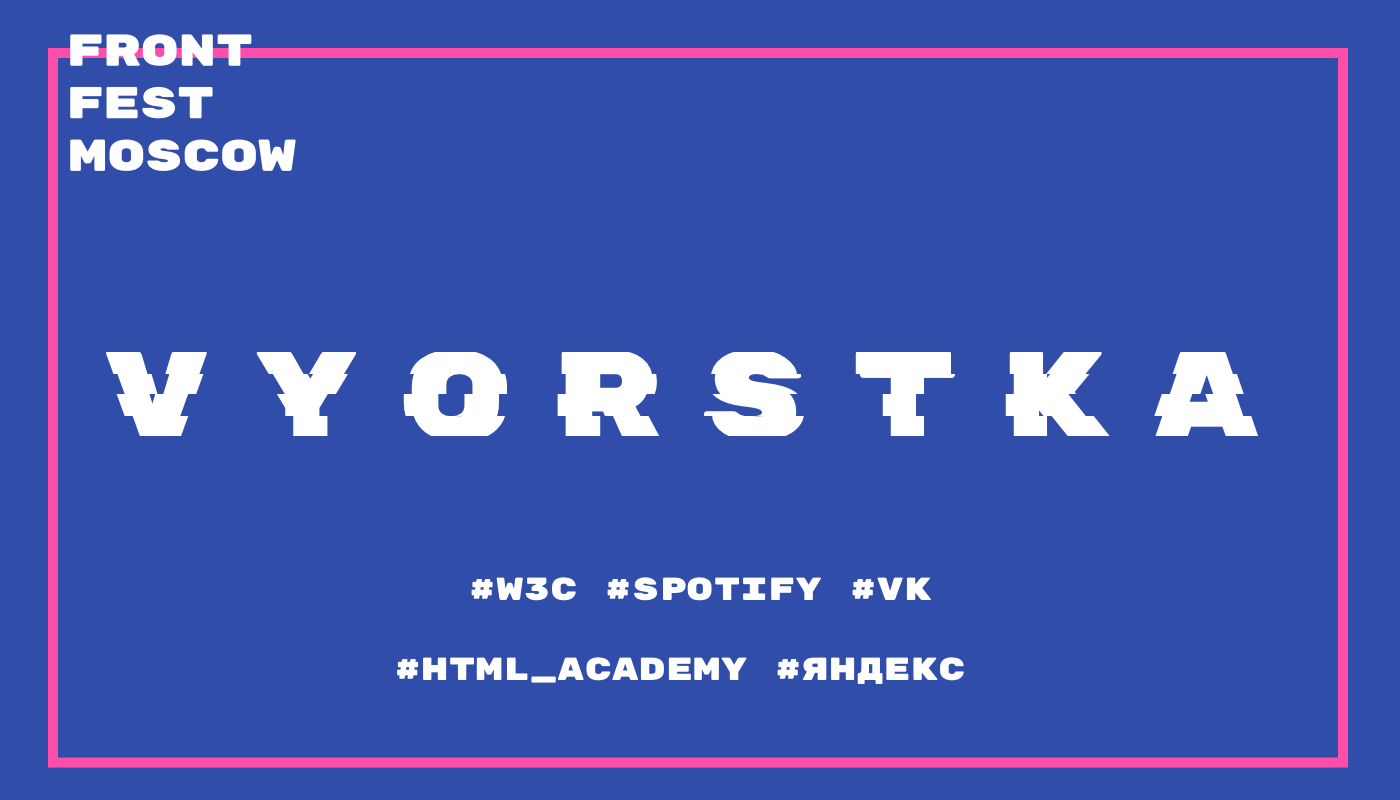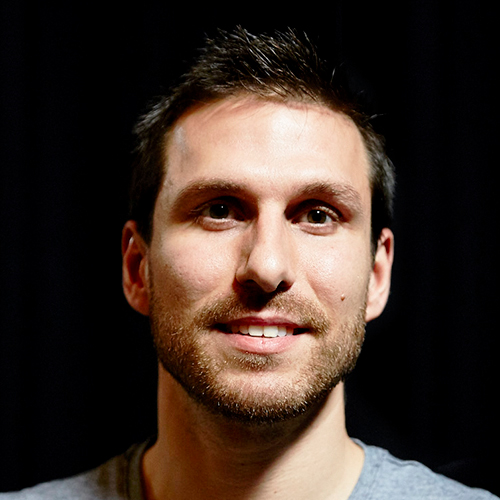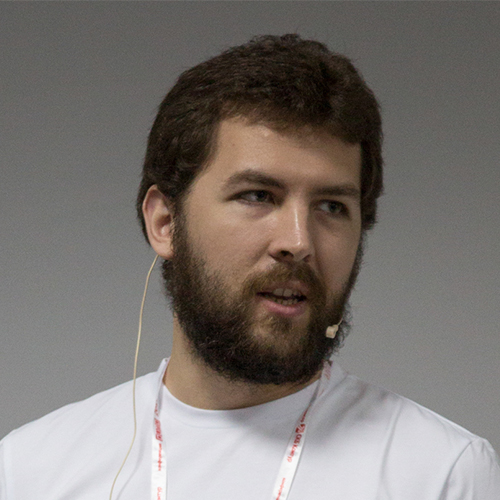FrontFest.Vyorstka: let's talk about accessibility, saving traffic and future CSS

JavaScript is there, JavaScript is here, JavaScript is everywhere, but let's remember how the web started and without which it cannot exist today - VYORSTKA, and its two main components - HTML and CSS.
In the VYORSTKA section at FrontFest, we gathered speakers from cool companies to talk about the availability of sites for people with disabilities, to understand modern ways to save traffic by optimizing images, to discuss new specifications in styles, and to consider alternative approaches to template making.
§ About accessibility
 This year marks exactly twenty years
This year marks exactly twenty yearsLéonie Watson is a web developer. So it turned out that at some point she changed the scope of her activity and took up the accessibility of sites - who, if not she, working with sites solely with the help of a screen announcer, can so thoroughly understand this topic. During her career, Léonie advised the developers of the UK Government site, the Smashing Magazine site, wrote a large number of articles, and even became a member of the W3C HTML and SVG working group.
')
For many years, developers have written semantic markup, WAI-ARIA is not a set of letters for anyone, but what’s the problem? The problem with the ubiquitous use of JavaScript frameworks, which pushed all the work done a dozen years ago - our markup again consists of a span and a div. For people with disabilities, this is an almost invisible site. How to solve this problem, we learn from the report of Léonie " Developer's guide to accessibility mechanics ".
§ About image optimization
Images are, as a rule, the “heaviest” static. But, for some reason, front-endors very often bypass them.
First, developers often forget that it is possible to significantly reduce the size of downloadable resources by compressing graphics. Spending with a lot of effort to reduce the size of the bandl with styles or scripts.
Secondly, we do not always use adaptive images that allow displaying different pictures depending on the screen resolution. Moreover, how and when we load graphics also affects the speed of our site.
Help us deal with these questions: Jose M. Perez from Spotify and Tim Chaptykov from Vkontakte.
 Jose M. Perez is a web developer with Spotify. In the company, working on open.spotify.com and Spotify web player. He likes to improve the performance of websites.
Jose M. Perez is a web developer with Spotify. In the company, working on open.spotify.com and Spotify web player. He likes to improve the performance of websites.Jose will talk about several techniques for optimizing images used by famous websites. Place-based techniques, dominant colors, blurry images and lazy loading that will help improve site performance. These techniques use various technologies, such as: CSS3, canvas, and IntersectionObserver API.
 Tim Chaptykov , the developer of the Vkontakte message section, will present the topic: “ Optimizing graphics in practice ”.
Tim Chaptykov , the developer of the Vkontakte message section, will present the topic: “ Optimizing graphics in practice ”.Tim's talk will be about changing formats, optimizing without losing quality, merging and sharing images and other more advanced ways to save kilobytes.
§ About the future of CSS
CSS, like any other frontend technology, is booming. Constantly there are new specifications that are immediately introduced, will be once introduced, or simply lost in the drafts.
 Sergey Popov , a frontend, a mentor in HTML Academy, the organizer of moscowcss and the Moscow Frontend Conference, ponders on the topic “ What if we reach there and everything will be there? ".
Sergey Popov , a frontend, a mentor in HTML Academy, the organizer of moscowcss and the Moscow Frontend Conference, ponders on the topic “ What if we reach there and everything will be there? ".The report will cover both draft specifications and new properties that are in development, but which we will use in everyday life some day: CSS Custom Properties, CSS Grid Layout, CSS Box Alignment 4 Level, CSS Selectors 4 Level, CSS Overflow 4 Level and several others.
§ About declarative templating
Remember the times when we used HTML attributes like bgcolor for styling? And how great was the invention of declarative CSS? We got rid of copy-paste and got the opportunity to override any rules.
 Vladimir Grinenko , in the report “ Declarative templateization ”, will tell us how to add these features to the markup.
Vladimir Grinenko , in the report “ Declarative templateization ”, will tell us how to add these features to the markup.Vladimir is the head of the group of common interface components in the Simferopol office of Yandex. At various times he participated in the development of the main page yandex.ru, internal services and components of the portal. He is engaged in the development of BEM and is happy to answer developers on questions about the methodology.
We made the stream as interesting as possible for everyone - it doesn't matter if you only work with .jsx files, or even periodically typesetting with tables - the topics of the reports in one way or another concern everyone who is connected to the frontend. But this is not all, in parallel with the flow of VYORSTKA, we will have sections of JS and MIX (we wrote about it last week), and also the flow of apartment attendants and the flow of workshops. We will tell about them in the next month, but for now ↓

Sign up for us on Twitter , Facebook and VKontakte , as well as look on Instagram .
Source: https://habr.com/ru/post/339708/
All Articles